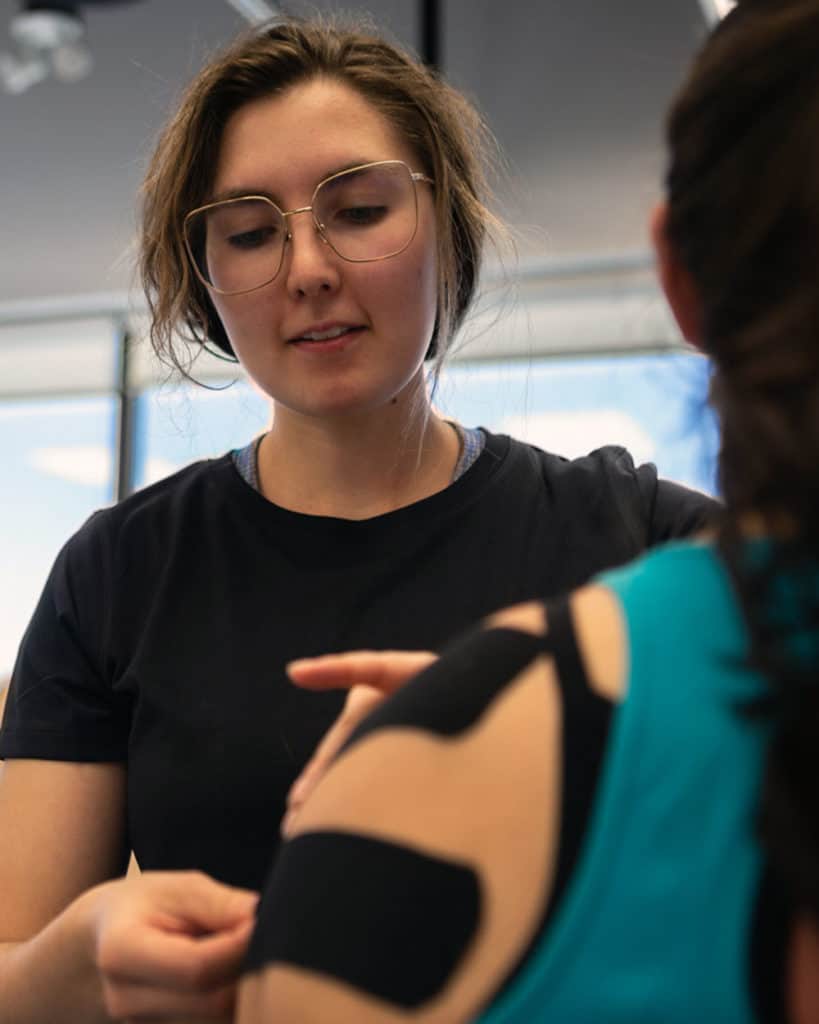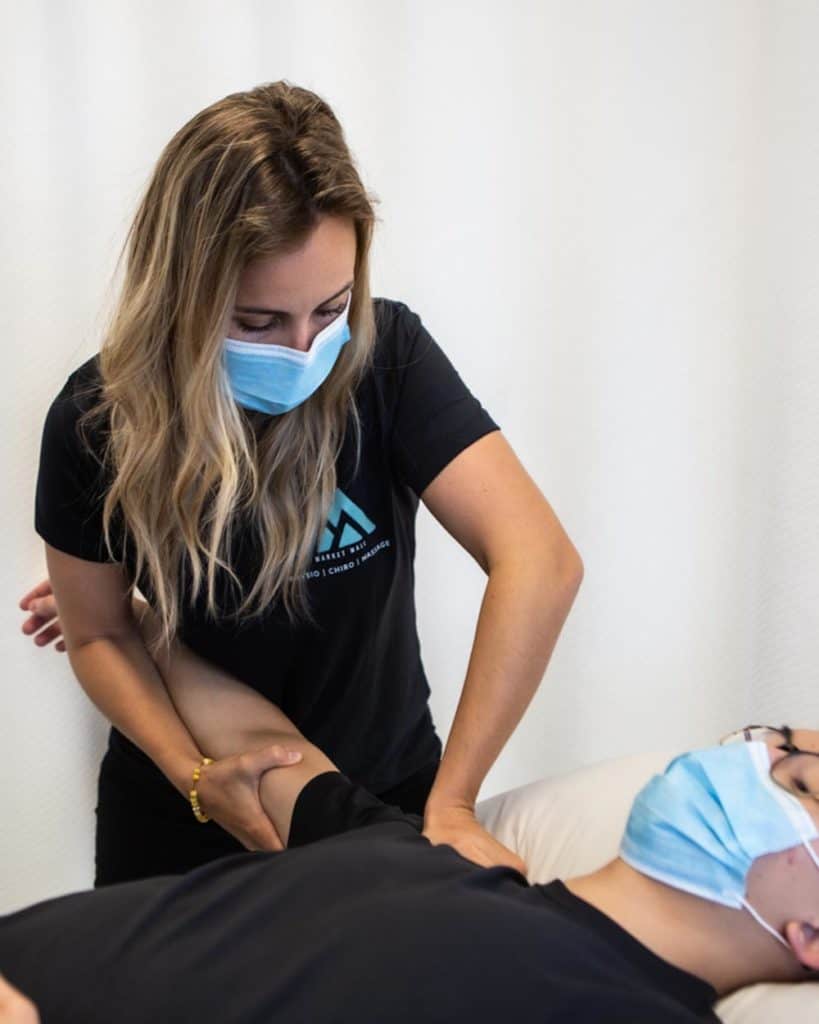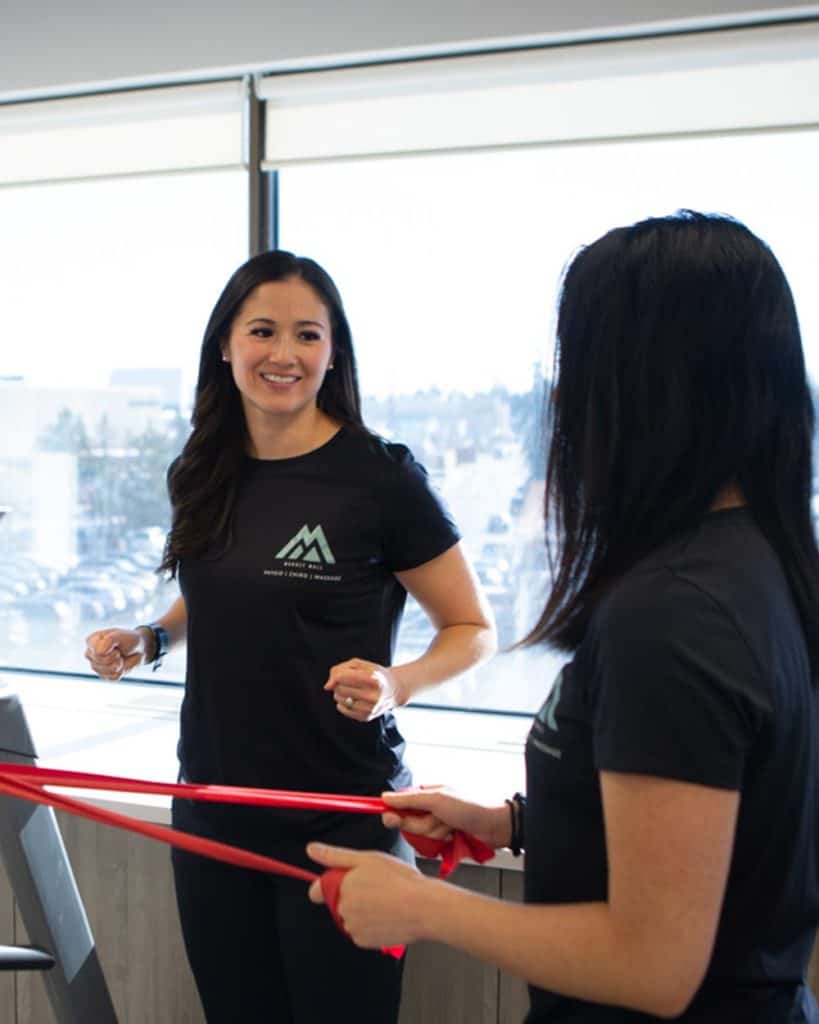
JaneApp Data Security Features: How Your Clinic’s Information Stays Protected
JaneApp Data Security Features: How Your Clinic’s Information Stays Protected Takeaways Jane is HIPAA- and PIPEDA- compliant Data is encrypted, whether at rest or in
Start Feeling Better In As Few As 3 Visits.
If you are experiencing pain in your muscles, joints or bones, orthopedic physical therapy may be the right solution for you. Orthopaedic physical therapy is a type of treatment that is designed to help people who are suffering from musculoskeletal problems. In this guide, we will discuss what orthopaedic physical therapy is, what it can treat, and how it works. We will also provide some tips on how to find the best orthopaedic physical therapist for you!
What Is Orthopaedic Physical Therapy?
Orthopaedic physical therapy is a type of treatment that is designed to improve the function of people who are suffering from musculoskeletal problems. The goal of orthopaedic physical therapy is to reduce pain, improve function, facilitate the return to activity and work and prevent further injury. Orthopaedic physical therapists use a variety of techniques to achieve these goals, including education, exercises and manual therapy.

Tell us what hurts, and we will treat your pain in the shortest time possible. Get effective treatment for your condition in less than 30 minutes so you can get back to doing what you live… pain-free.
Get a personalized care plan so you can feel better in as few as 3 visits. We use advanced therapy techniques proven to ease pain, accelerate recovery, improve mobility and overall health.


Our team of licensed physiotherapists, chiropractors, registered massage therapists are professionals and in human anatomy and biomechanics. You will get the perfect care plan to target the root of your pain so you can get back to doing what you love, everyday!
This appointment is your opportunity to tell us what hurts and discover whether orthopedic physical therapy is a good fit for you! During this session, you will talk with a physiotherapist on a phone call (or online) and create the right care plan specifically for your pain. There is no obligation, this session is only to find out if physiotherapy can help you getting back to doing the things you love in life.
If you’re like most you don’t want to wait days or weeks to get treated for your pain. And you don’t want to have to spend your time calling nearby clinics to find the one who can see you the fastest.
That’s where PainHero comes In – Canada’s largest network of physiotherapists, chiropractors, and registered massage therapists.
Our Platform is used by clinics where they post their open appointment times. So you can quickly compare availability and wait times for clinics near you without having to pick up the phone. Then book an appointment within seconds and even see someone that day if you want. So you can get back to doing the things you love faster.
Plus unlike other sites who let anyone on or just rely on google reviews. We hand pick clinics based on a 50-point inspection, which includes everything from checking reviews, ratings, reputation, history, complaints, satisfaction, trust, cost, and general excellence.
Improve the way your body moves so you can continue to do the things you love. PainHero is Canada’s largest network of physiotherapists, chiropractors, and registered massage therapists. Our mission is to make it easy for you to find the top clinics in your community. We handpick the top clinics using our 50 point inspection based on patient reviews, complaints, and patient outcomes.
Whether you’re seeking pain relief or preventative care, you can expect our patient-centric approach to be new and different from any healthcare experience you’ve had before. Perhaps even life-changing.
1460+
Clinics
2172+
Caring Therapists
2M+
Patient Visits


Orthopaedic physical therapy can be used to treat a wide variety of conditions, including:
-Arthritis
-Bursitis
-Tendonitis
-Joint pain
-Muscle pain
-Sprains and strains
-Fractures
These various types of injuries can occur in every joint, from the low back to the ankle to the jaw.
What is arthritis courtesy of Physiotherapy at Woodbridge. (Read the caption)

There are many benefits of orthopaedic physical therapy, including:
-Reduced pain
-Improved function
-Increased mobility
-Reduced lost time from activities and work
-Prevention of further injury
-Improved quality of life.
If you are experiencing pain or limited functional abilities, orthopaedic physical therapy may be right for you. This type of therapy can help to both improve function and reduce pain. Your therapist will tailor your treatment plan to your unique needs and goals. With the help of an orthopaedic physical therapist, you can experience an improved quality of life.
Find out whether orthopedic physical therapy can help you get back to doing the things you love in life.
There are many different types of physical therapy, and each type has its own advantages. Orthopaedic Physical Therapy, for example, focuses on treating injuries and disorders of the musculoskeletal system. The human musculoskeletal system is made up of bones, joints, muscles, and connective tissue. Together, these structures work to support the body, protect internal organs, and allow for movement.
Orthopaedic physical therapists have extensive training in diagnosing and treating conditions of this system like arthritis, back pain, and fractures. Physical therapists, on the other hand, may focus on a variety of different specialties. This could include anything from sports medicine to neurological physical therapy.
In general, orthopaedic physical therapy is just one type of physical therapy.
Benefits of physical therapy courtesy of Total Rehabilitation and Chiropractic Centre – Thornhill. (Read the caption)
An initial orthopaedic physical therapy session usually lasts for around an hour. The therapist will carry out a full assessment of the patient’s condition, including range of motion, strength, and flexibility. They will then develop a personalized treatment plan to help the patient recover from their injury. The therapist will provide advice on how to manage symptoms as well as provide an exercise program to start the recovery process. The therapist will also give you advice on how to prevent further injuries from occurring. They may also complete hands-on therapy including soft-tissue massage and joint mobilization. They will also make a plan with you to determine the best way of finding success with your goal from physical therapy.
The length of time it takes for physical therapy to start working varies from person to person. Some people may start to see results after a few sessions, while others may need more time. The therapist will work with the patient to set realistic goals and expectations.
Healing times courtesy of Park Lawn Physiotherapy. (Read the caption)
Orthopaedic physiotherapists use a variety of treatments to relieve pain, improve function, and prevent further injury. Common treatments include:
Education
One of the most important things a physical therapist can do is educate you about your condition and your treatment options. Having a good understanding of the contributing factors to your injury and the strategies you can incorporate to improve your function is incredibly important. As they say, knowledge is power!
Exercise
When you look at the scientific literature, exercise is the most effective treatment option across almost all musculoskeletal conditions. This includes low back pain, neck pain, osteoarthritis, rotator cuff pain, tennis elbow, ankle sprains and many more. Your physiotherapist will teach various exercises to improve your mobility, strength, function, balance and to improve your pain. These exercises will come in the form of stretching, self-mobilizations and resistance training. As you improve your condition, your therapist will progress your exercises to allow for even further recovery.
Joint mobilization
Joint mobilization is used to treat pain and stiffness in joints. It is also used to increase range of motion and to improve function. Joint mobilization involves using a therapist’s hands to move the joint through its natural range of motion. The therapist may also use special instruments to help with the mobilization. Joint mobilization is a gentle technique that is often used for people who have osteoarthritis or other conditions that cause joint pain. It is safe for most people, but it may not be appropriate for everyone. If you have any concerns about whether joint mobilization is right for you, please ask your doctor or physiotherapist.
Muscle stretching
Muscle stretching is an orthopaedic physical therapy technique that helps to lengthen and relax muscles. It is often used to improve range of motion and relieve muscle tension. Muscle stretching can be performed manually or with the help of devices. It is important to stretch muscles gradually and avoid excessive force, which can cause injuries. When performed correctly, muscle stretching can help to improve flexibility, reduce pain, and prevent injuries.
Electrical stimulation
Electrical stimulation, also known as E-stim, is a treatment that uses electrical signals to relieve pain. The electrical signals are generated by a device that is placed on the skin. They interact with the nervous system to provide relief from pain. Electrical stimulation has been used to treat a variety of conditions, including back pain, migraines, and arthritis. It is also used to improve circulation and to promote healing after an injury. Some people find that electrical stimulation provides long-lasting pain relief, while others find that it only provides temporary relief. However, electrical stimulation is generally safe and well-tolerated. Side effects are rare but may include skin irritation, muscle soreness, and dizziness.
Soft tissue manipulation is a type of massage that is used to treat muscles, tendons, and ligaments. It is a form of manual therapy that uses pressure and stretching to release tension and improve range of motion. Soft tissue manipulation has been found to be effective for treating a variety of conditions, including back pain, repetitive strain injuries, headaches, and migraines.
Research has shown that soft tissue manipulation can help to relieve pain, reduce inflammation, and improve range of motion. In addition, soft tissue manipulation is often used as a preventative measure to help avoid injuries. For example, massaging muscles before exercise can help to warm them up and increase blood flow. As a result, soft tissue manipulation can be an important tool for maintaining your health and wellbeing.
Dry needling is a type of physical therapy that involves inserting thin needles into the skin and muscles. The goal of dry needling is to release trigger points, or knots that form when muscles are tightened or injured. Dry needling is often used to relieve pain, improve range of motion, and increase blood flow. The needles used in dry needling are much thinner than those used in acupuncture, and they do not remain in the skin for very long. Dry needling is usually performed by physical therapists, but it can also be done by massage therapists, chiropractors, and acupuncturists. While dry needling is generally safe, there is a small risk of bruising, bleeding, or infection. If you are interested in trying dry needling, be sure to consult with a qualified healthcare provider.
Physical therapists sometimes use light therapy to help their patients recover from injuries. Light therapy, also called laser therapy, uses low-level lasers or LEDs to stimulate the healing process. This type of therapy is thought to work by increasing local circulation and reducing inflammation. It can be used to treat a variety of conditions, including arthritis, tendonitis, and back pain. In some cases, it may also be used to speed up the healing of wounds. Physical therapists will often use light therapy in conjunction with other treatments, such as massage and exercises. By using light therapy as part of a comprehensive treatment plan, physical therapists can help their patients recover more quickly and robustly from injuries.
Kinesiology tape is a type of therapeutic tape that is used to relieve pain and help rehabilitate injuries. The tape is made from a stretchy, hypoallergenic material that can be applied directly to the skin. When applied correctly, kinesiology tape can help to reduce inflammation, improve circulation, and promote healing. Additionally, the tape can provide support for muscles and joints, making it an ideal treatment for athletes or anyone who suffers from chronic pain. Although kinesiology taping is relatively new, it has quickly become a popular treatment option for many people. Kinesiology taping can be an effective treatment for a variety of conditions, making it a valuable tool in any healthcare provider’s arsenal.
Check out this great post from Koonar Physiotherapy and learn more about TENS machine and its benefits (Read the caption):

If you are looking for an orthopaedic physical therapist, there are a few things you should keep in mind. First, it is important to find a therapist who is experienced and certified. Second, you should make sure that the therapist is a good fit for you personally. If you feel like you respond to exercise when rehabbing injuries, you should seek out a therapist who prioritizes exercise in their treatment approach. Finally, you should seek a therapist who displays compassion and empathy towards your situation.
If you follow these tips, you will be on your way to finding the best orthopaedic physical therapist for you!
You can also use the search box on this page to find a top physical therapist near you. In our blog section, we also list the top in many areas in Canada based on our 50-point inspection.
How to choose a physiotherapist courtesy of Park Lawn Physiotherapy. (Read the caption)
No, it’s a degenerative disease. But, with osteoarthritis you can still improve pain and function with physiotherapy. If left untreated your function may continue to worsen.
Yes walking is a low impact exercise that reduces stiffness and improves range of motion.

JaneApp Data Security Features: How Your Clinic’s Information Stays Protected Takeaways Jane is HIPAA- and PIPEDA- compliant Data is encrypted, whether at rest or in

JaneApp Reporting and Analytics: How Clinics Can Track Growth and Performance Takeaways Jane’s reports are super underrated, they give you real insight into how your

JaneApp Customer Support: How to Get the Help Your Clinic Needs Takeaways Use the in-app chat first if you can Email is fine, but be
No, physiotherapists are not medical doctors. However, they are highly educated and trained healthcare professionals who are experts in the field of musculoskeletal rehabilitation.
There is no difference between physical therapy and physiotherapy. The two terms can be used interchangeably.
No, physiotherapists do not perform surgery. They are experts in the field of physical therapy and rehabilitation, and they use their knowledge to help patients recover from injuries and improve their overall physical health.
Orthopedic Physical Therapy is one of several possible methods for relieving pain that do not rely on prescription medications and all the side effects and baggage they come with. Not to mention that most drugs can only mask pain, but rarely address root causes. Find a clinic if you are suffering from muscle tightness, soreness, or pain to improve your quality of life, today.
